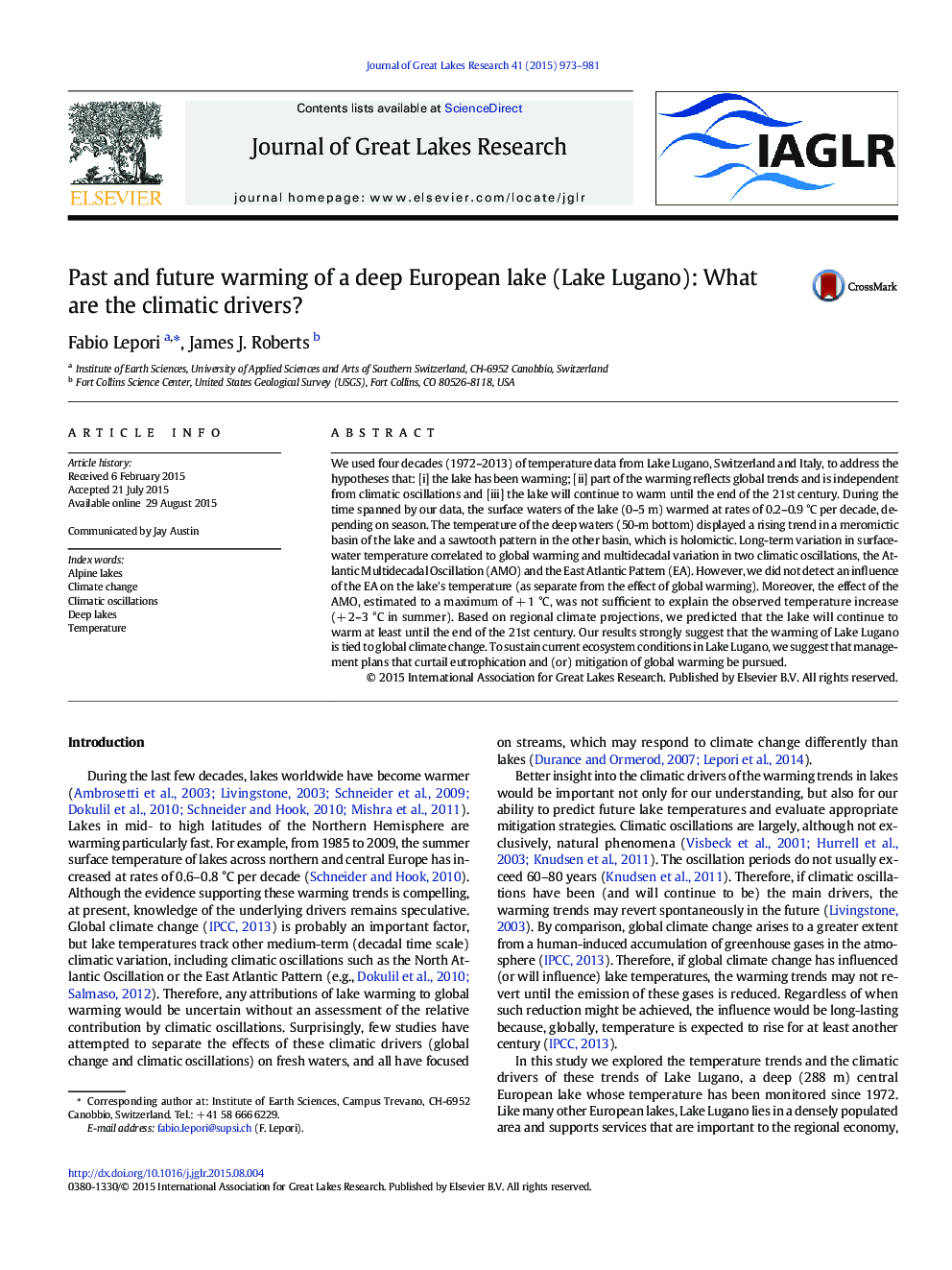| کد مقاله | کد نشریه | سال انتشار | مقاله انگلیسی | نسخه تمام متن |
|---|---|---|---|---|
| 6304830 | 1306676 | 2015 | 9 صفحه PDF | دانلود رایگان |
عنوان انگلیسی مقاله ISI
Past and future warming of a deep European lake (Lake Lugano): What are the climatic drivers?
ترجمه فارسی عنوان
گرم شدن گذشته و آینده یک دریاچه عمیق اروپایی (دریاچه لوگانو): رانندگان آب و هوایی چیست؟
دانلود مقاله + سفارش ترجمه
دانلود مقاله ISI انگلیسی
رایگان برای ایرانیان
کلمات کلیدی
دریاچه های آلپ، تغییر آب و هوا، نوسانات آب و هوا، دریاچه های عمیق درجه حرارت،
موضوعات مرتبط
مهندسی و علوم پایه
علوم زمین و سیارات
علوم زمین و سیاره ای (عمومی)
چکیده انگلیسی
We used four decades (1972-2013) of temperature data from Lake Lugano, Switzerland and Italy, to address the hypotheses that: [i] the lake has been warming; [ii] part of the warming reflects global trends and is independent from climatic oscillations and [iii] the lake will continue to warm until the end of the 21st century. During the time spanned by our data, the surface waters of the lake (0-5 m) warmed at rates of 0.2-0.9 °C per decade, depending on season. The temperature of the deep waters (50-m bottom) displayed a rising trend in a meromictic basin of the lake and a sawtooth pattern in the other basin, which is holomictic. Long-term variation in surface-water temperature correlated to global warming and multidecadal variation in two climatic oscillations, the Atlantic Multidecadal Oscillation (AMO) and the East Atlantic Pattern (EA). However, we did not detect an influence of the EA on the lake's temperature (as separate from the effect of global warming). Moreover, the effect of the AMO, estimated to a maximum of + 1 °C, was not sufficient to explain the observed temperature increase (+ 2-3 °C in summer). Based on regional climate projections, we predicted that the lake will continue to warm at least until the end of the 21st century. Our results strongly suggest that the warming of Lake Lugano is tied to global climate change. To sustain current ecosystem conditions in Lake Lugano, we suggest that management plans that curtail eutrophication and (or) mitigation of global warming be pursued.
ناشر
Database: Elsevier - ScienceDirect (ساینس دایرکت)
Journal: Journal of Great Lakes Research - Volume 41, Issue 4, December 2015, Pages 973-981
Journal: Journal of Great Lakes Research - Volume 41, Issue 4, December 2015, Pages 973-981
نویسندگان
Fabio Lepori, James J. Roberts,
